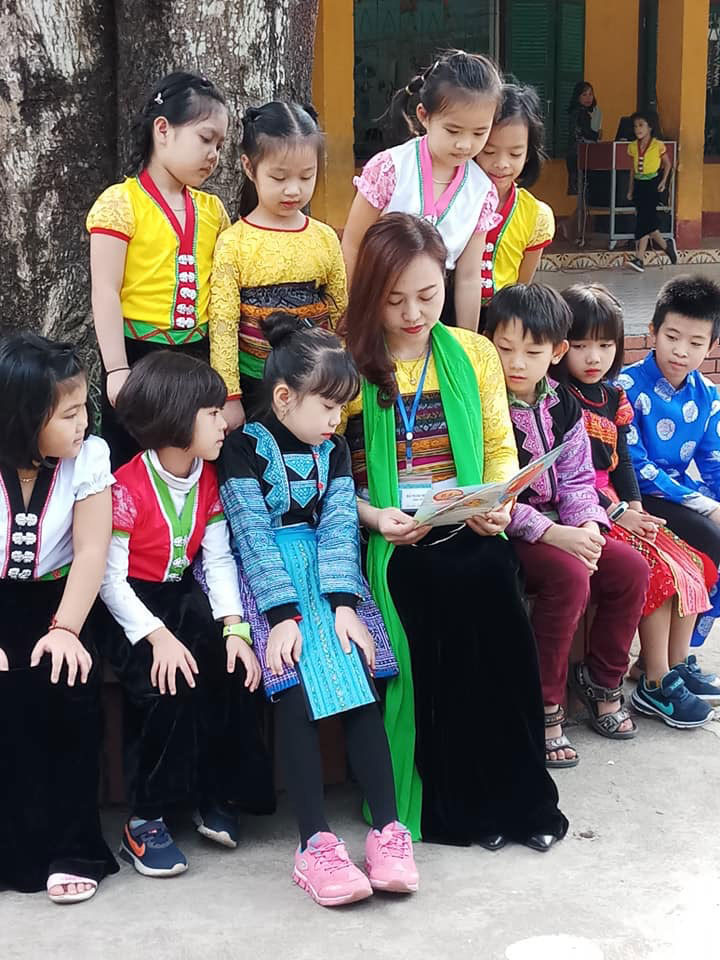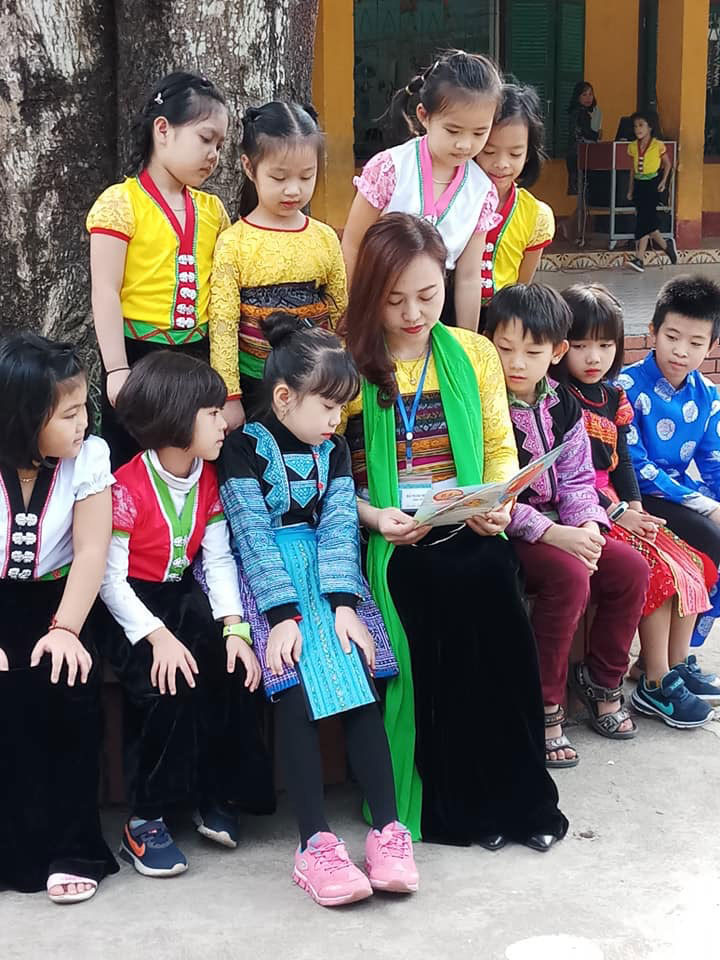
(HBO0 - A mountainous district, Mai Chau is home to seven ethnic groups, with the Thai making up over 86 percent. In order to preserve and uphold the traditional cultural value of the group, local departments and agencies actively are encouraging and expanding a movement of wearing traditional costumes during major holidays and working days.
 Teachers and
students of a local elementary school maintain tradition of wearing traditional
ethnic costumes every Friday.
Teachers and
students of a local elementary school maintain tradition of wearing traditional
ethnic costumes every Friday.
Honouring the
beauty of traditional costumes to contribute to the preservation and upholding of
Thai cultural values, the district Women's Union recently directed units to
maintain the movement of wearing traditional costumes, towards realising the
Party Central Committee’s Resolution No. 33 on "building and developing the
Vietnamese culture and people to meet requirements for sustainable national
development", the provincial and district Party committees’ directives on
strengthening administrative discipline and spreading civilised lifestyle and corporate
culture.
The province now records 70 models from communes and towns, 46 schools
and eight agencies with the rule on wearing traditional costumes every Monday
and Thursday. The district Women’s Union raised public awareness of the effort
in various forms, attracting members from 16 communes and townships to join the
movement. Nine local units were assisted in sewing brocade uniforms for female
officials and cadres, contributing to maintaining ethnic identity and
developing traditional brocade weaving.
For the
preservation, restoration and upholding of cultural heritages related to
traditional costumes of ethnic minorities, the district opened a training
course on skills to uphold the value of intangible cultural heritage regarding
handicraft and embroidery. It also launched an awareness campaign to preserve
traditional ethnic costumes in suitable ways, including wearing traditional costumes
at boarding schools, encouraging ethnic officials and cadres to wear them
during traditional Lunar New Year or festivals, introducing them to tourists
and travel agencies, and issuing mechanisms and policies for artisans.
To realise goals
in the project on the preservation and upholding of traditional costumes of
ethnic Vietnamese minorities in the current period, Mai Chau district
contributed to the sustainable development of ethnic culture nationwide./.
With an increasingly vibrant and widespread emulation movement aimed at building cultured residential areas and cultured families, Yen Thuy District has been making steady progress toward improving both the material and spiritual well-being of its people, while fostering a civilized, prosperous, beautiful, and progressive community.
Once lacking recreational spaces and community facilities, Residential Group 2 in Quynh Lam Ward (Hoa Binh City) has recently received attention for the construction of a new, spacious, and fully equipped cultural house. The project followed the model of state support combined with public contributions in both labor and funding.
The "All people unite to build cultural life" movement, which has been effectively integrated with Kim Boi district’s socio-economic development goals, is fostering a lively spirit of emulation across local residential areas, hamlets, villages, public agencies, and enterprises. In addition, through the initiative, traditional cultural values are being preserved and promoted, while community solidarity and mutual support in poverty reduction and economic development are being strengthened.
A working delegation of the Hoa Binh provincial People’s Committee led by its Permanent Vice Chairman Nguyen Van Toan on June 11 inspected the progress of a project to build the Mo Muong Cultural Heritage Conservation Space linked to tourism services in Hop Phong commune, Cao Phong district.
Born and growing in the heroic land of Muong Dong, Dinh Thi Kieu Dung, a resident in Bo town of Kim Boi district, in her childhood was nurtured by the sweet lullabies of her grandmother and mother. These melodies deeply imprinted on her soul, becoming an inseparable part of her love for her ethnic group's culture. For over 20 years, this love for her hometown has driven Dung to research, collect, and pass down the cultural values of the Muong people to future generations.
In the final days of May, the Ethnic Art Troupe of Hoa Binh Province organized performances to serve the people in remote, mountainous, and particularly disadvantaged areas within the province. These were not just ordinary artistic shows, but they were the meaningful journeys aimed at spreading cultural values, enhancing the spiritual life of the people and contributing to the preservation of ethnic minority cultural identities.



 Teachers and
students of a local elementary school maintain tradition of wearing traditional
ethnic costumes every Friday.
Teachers and
students of a local elementary school maintain tradition of wearing traditional
ethnic costumes every Friday.